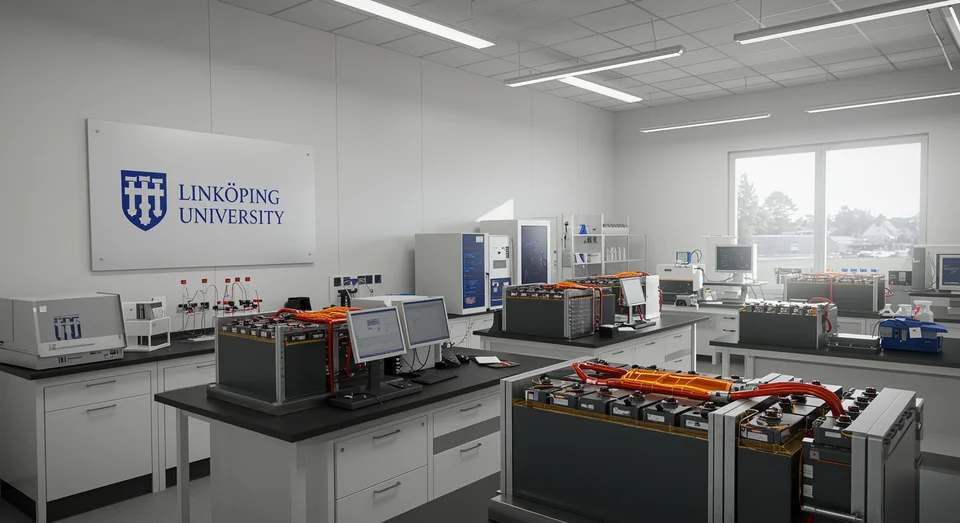Linköping University Unveils Stretchable Fluid Battery for Wearable Tech and Sustainable Energy Solutions
190 views
A Stretchable Revolution: Flexible Fluid Batteries Set to Transform Wearable Tech and Beyond
In a groundbreaking leap toward the future of wearable technology, researchers at Linköping University have unveiled a revolutionary battery design that promises to redefine the landscape of energy storage. Eschewing the rigid, bulky batteries of today, they have developed "electrofluids," fluid-based electrodes that enable batteries to bend, twist, and stretch without compromising their energy storage capacity. This innovation not only tackles the technical limitations of traditional batteries but also champions environmental sustainability by utilizing conductive polymers and lignin—a byproduct of paper manufacturing—as its core materials.

The ingenuity of the fluid battery lies in its ability to reconcile two seemingly irreconcilable demands: flexibility and performance. Capable of stretching to twice its original length, the battery retains nearly full capacity even after enduring 500 charge-discharge cycles. This remarkable durability positions it as a game-changer for wearable technologies, electronic skin patches, medical implants, and even soft robotics. With its ability to adapt to the contours of the human body or the dynamic movements of machines, the fluid battery opens doors to applications that were previously constrained by the rigidity of conventional power sources.
What sets this innovation apart is its commitment to sustainability. Unlike traditional batteries that rely on rare metals and environmentally taxing production processes, the electrofluid battery employs abundant, eco-friendly materials. Lignin, a natural polymer derived from wood and paper manufacturing, not only reduces the environmental footprint but also aligns with the principles of a circular economy. This approach reflects an urgent shift in technological development, where functionality no longer comes at the expense of ecological responsibility.
While the current iteration of the fluid battery delivers a modest 0.9 volts, researchers are actively exploring new chemical combinations to enhance its voltage output. Their challenge lies in maintaining the delicate balance between increased energy capacity and the sustainability of materials. Nevertheless, even at its present stage, the innovation heralds a transformative era for wearable devices, offering enhanced comfort and adaptability for users.
The implications of this development are profound. For wearable technologies, flexible batteries could mean electronic skin patches that monitor vital signs seamlessly or implantable sensors that conform to the body’s natural movements. In the realm of medical devices, the ability to integrate stretchable power sources could lead to breakthroughs in patient care, allowing for less invasive and more adaptive solutions. Electronic textiles might evolve into garments that power themselves, while soft robotics could achieve unprecedented levels of fluidity and precision, mimicking human motion with greater accuracy.
However, the significance of this advancement extends beyond its immediate applications. It exemplifies a broader shift in scientific innovation—a move toward technologies that prioritize both performance and sustainability. As industries grapple with the challenges of environmental degradation and resource scarcity, the fluid battery serves as a beacon of what is possible when creativity and conscience intersect.
This innovation also raises intriguing questions about the future of energy storage. Could the principles of fluid-based design inspire other sectors, such as large-scale renewable energy systems? Might the marriage of flexibility and sustainability become a guiding philosophy for technological progress across disciplines?
As researchers at Linköping University continue to refine their creation, one thing is certain: the fluid battery is not merely a technical achievement but a symbol of a changing paradigm. It invites us to imagine a future where technology adapts to the human experience rather than forcing us to adapt to its limitations. It challenges us to rethink the materials we use, the designs we create, and the impact we leave on the world.
In the coming years, as the fluid battery evolves and finds its way into commercial applications, it may well become a cornerstone of wearable tech, medical innovation, and beyond. For now, it stands as a testament to the boundless possibilities of human ingenuity—a reminder that the most significant breakthroughs often emerge at the intersection of necessity and imagination.
